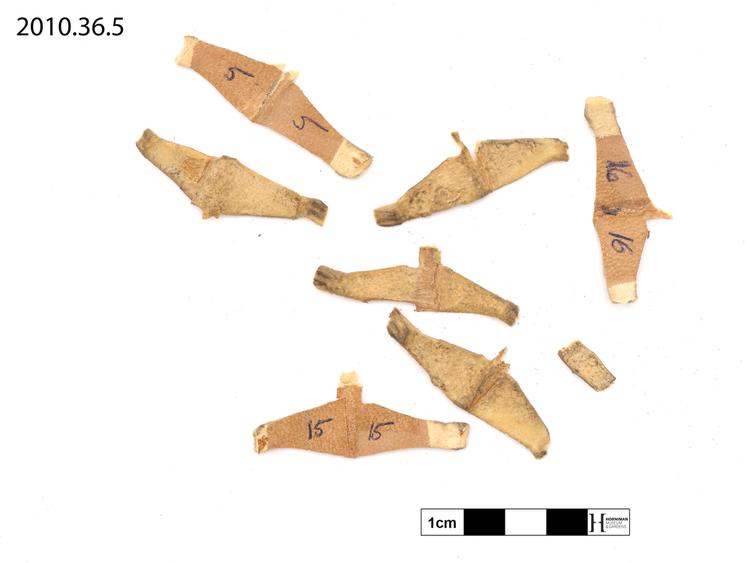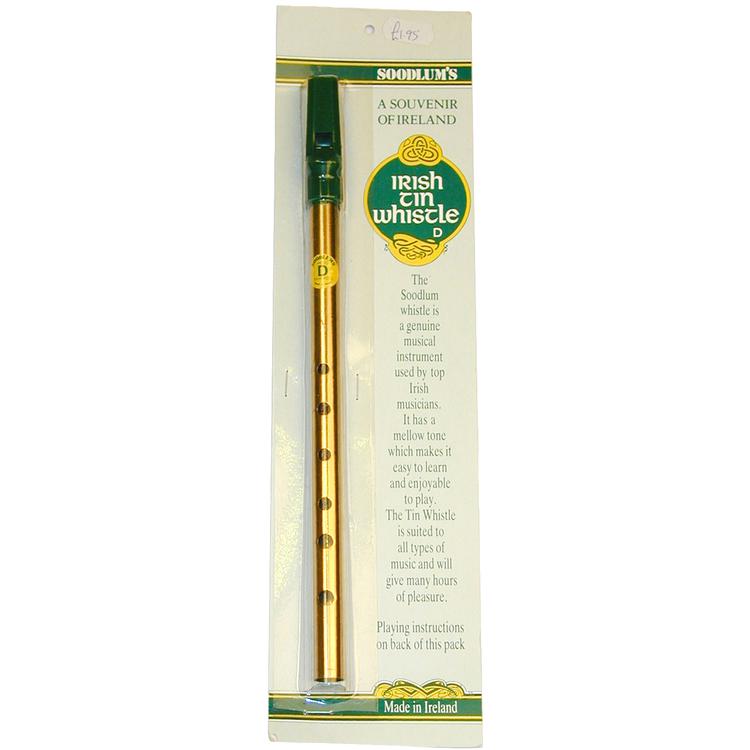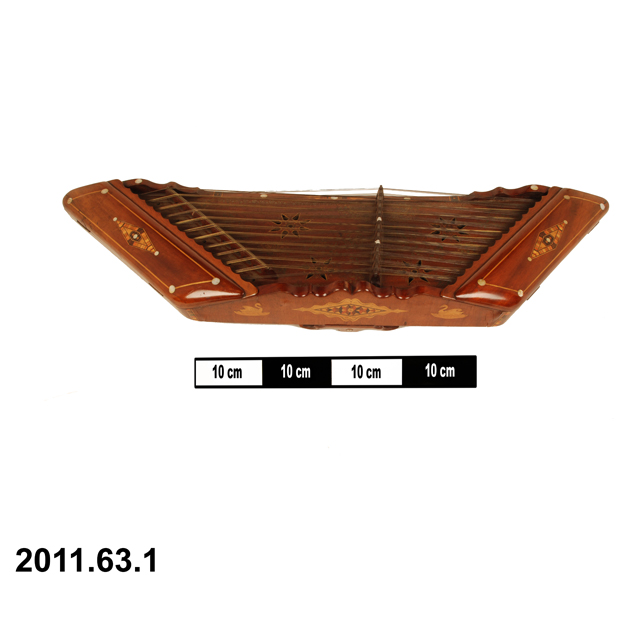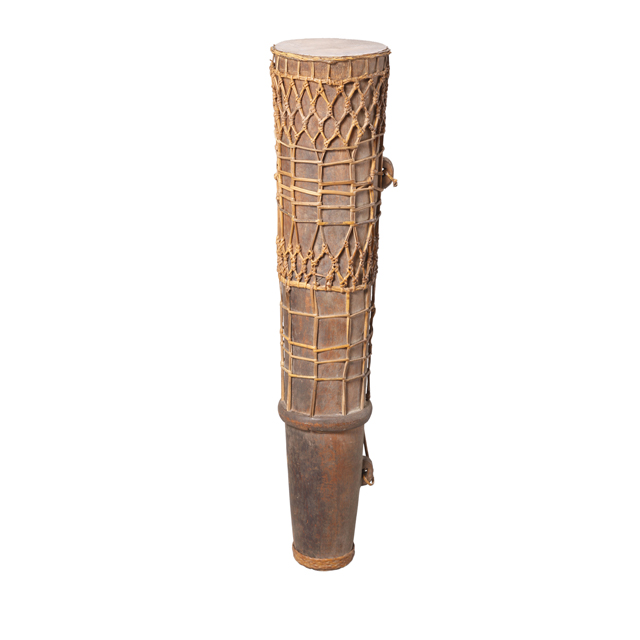
'Ūd 'arbī ('ud 'arbi), lute with four double courses of strings. The body has a rounded back formed from nine ribs. The table of light brown wood is made in six parts, and overhangs the body of the instrument by 5-6mm. Three ornate roses are carved out of the upper part of the table. The moustachioed tie-bridge is of wood with mother of pearl inlay. A scratch plate of parallelogram form of a light brown wood framed within a dark wood and mother of pearl border is inset into the centre of the table. The neck is short and of a dark brown wood edged with bone, with a fretless fingerboard. The nut is wider than the neck. The pegbox which meets the top of the neck from the back, is curved and slopes backwards. The four double courses of strings are tuned from side-entrant pegs, four on each side, which are long and with circular ends tipped with bone. This instrument is named "oud" ('ūd) in Carl Engel's Catalogue of the Musical Instruments in the South Kensington Museum (1874). Similar instruments originating from Tunisia, the likely country of origin of this example, that are in theī collection of the MIM in Brussels (inventory numbers 0395 and 0877) are named 'quwaytara'. The name for this instrument in Tunisia is 'ūd 'arbī.


































































































































































































































































































































































































































































































































